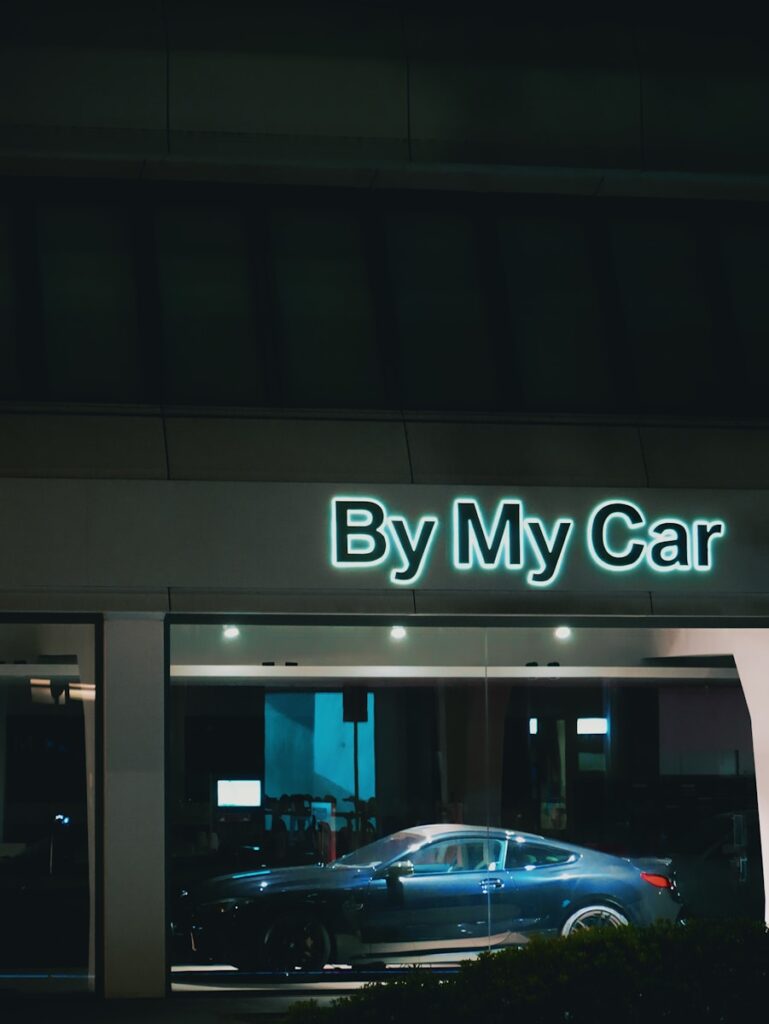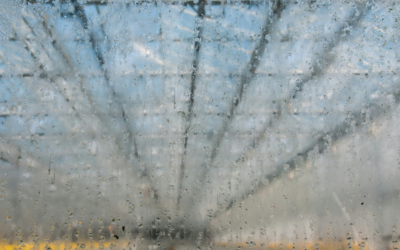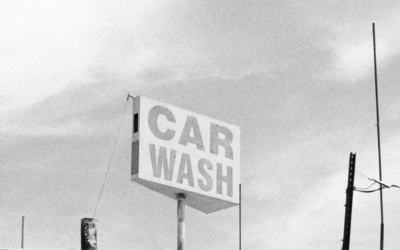Your car sits in the garage, covered in a layer of grime from last week’s road trip. The windshield has streaks that catch every ray of light, and salt residue from winter roads clings to the paint like a stubborn reminder of harsh weather. You promise yourself you’ll wash it this weekend, but life gets busy, and another week rolls by without worry.
What you might not realize is that every day your vehicle remains dirty, it’s quietly draining money from your wallet. Beyond the obvious aesthetic concerns, a dirty car creates hidden costs that can stretch your budget thin over time. From reduced fuel efficiency to expensive paint repairs, neglecting your vehicle’s exterior can lead to financial consequences that far exceed the cost of regular cleaning.
The good news? Understanding these costs puts you in control. Once you recognize how dirt, debris, and road salt affect your car’s performance and longevity, you can make informed decisions that protect both your vehicle and your finances. Let’s explore the five key ways a dirty car impacts your bottom line and what you can do to prevent these expensive problems.

Reduced Fuel Efficiency from Built-Up Grime
When dirt and debris accumulate on your car’s exterior, they don’t just affect its appearance—they create additional drag that forces your engine to work harder. This increased resistance can reduce fuel efficiency by up to 10%, according to automotive research studies.
The science behind this is straightforward. A clean, smooth surface allows air to flow efficiently around your vehicle, while dirt, mud, and grime create turbulence. Road salt, in particular, tends to gather in crevices and crannies where it builds up over time, creating rough surfaces that disrupt airflow patterns.
The Compounding Effect Over Time
Consider this scenario: if you typically spend $150 per month on gas, a 10% reduction in fuel efficiency costs you an additional $15 monthly. Over the course of a year, that’s $180 in extra fuel costs—money that could have been saved with regular car washes.
The problem compounds during certain seasons. Winter driving exposes your vehicle to road salt and de-icing chemicals that create a particularly stubborn layer of grime. Summer brings its own challenges, with pollen, tree sap, and dust that can cake onto surfaces and harden under intense heat.
Quick Solutions for Better Efficiency
Regular washing removes the debris that creates drag. Focus on areas where dirt tends to accumulate: the front grille, around wheel wells, and along the roofline. Even a basic wash every two weeks can help maintain optimal airflow around your vehicle.
For those short on time, a professional car wash service can tackle the deep cleaning needed to restore your car’s aerodynamic properties. The investment in professional cleaning often pays for itself through improved fuel efficiency alone.

Paint Damage, Road Salt and Costly Repairs
Your car’s paint serves as more than decoration—it’s the primary barrier protecting the metal underneath from rust and corrosion. When dirt, salt, and debris sit on your vehicle’s surface for extended periods, they begin to break down this protective layer.
Road salt presents the most significant threat to your paint job. These corrosive substances don’t simply sit on the surface; they actively eat away at the clear coat and paint beneath. Once the paint barrier is compromised, moisture reaches the metal, starting the oxidation process that leads to rust.
The True Cost of Paint Restoration
Professional paint repair can be expensive. Minor touch-ups for small areas typically cost between $300-$600, while extensive paint restoration can reach $3,000 or more. These costs make regular washing look like a bargain by comparison.
Paint damage also affects your vehicle’s resale value significantly. A car with visible paint issues, rust spots, or oxidation can lose 10-15% of its market value. For a vehicle worth $20,000, that represents a potential loss of $2,000-$3,000.
Prevention Through Regular Maintenance And Scrubbing
The key to avoiding paint damage is removing contaminants before they have time to bond with the surface. Washing your car removes dirt and salt that would otherwise sit against the paint, gradually wearing it down.
Pay special attention to areas where debris tends to gather: behind wheel wells, around door frames, and along the lower portions of doors and panels. These spots are particularly vulnerable because they’re constantly exposed to road spray and rarely get naturally rinsed by rain.
Glass cleaner can help maintain your windshield, but don’t forget about the paint surfaces. A gentle car wash soap and proper technique—using a circular motion with a clean cloth—can remove surface contaminants without scratching the paint.
Decreased Visibility and Safety Concerns
A dirty windshield doesn’t just look bad—it creates genuine safety hazards that can lead to accidents and insurance claims. When dirt, grime, and road spray accumulate on your windows, they scatter light in unpredictable ways, creating glare that can temporarily blind you while driving.
The problem becomes particularly dangerous during sunrise and sunset when low-angle sunlight hits your dirty windshield. What should be a clear view of the road ahead becomes a maze of streaks and spots that obscure important details like pedestrians, road signs, and other vehicles.
The Hidden Costs of Poor Visibility
Accidents caused by impaired visibility can result in significant financial consequences. Even minor fender-benders typically cost $3,000-$5,000 in repairs and insurance deductibles. More serious accidents can lead to much higher costs, including increased insurance premiums that persist for years.
Insurance companies may also question claims where poor vehicle maintenance—including dirty windows—contributed to an accident. While they rarely deny claims outright for dirty windshields, they may argue that driver negligence played a role, potentially affecting your settlement.
Beyond the Windshield
Don’t forget about your side mirrors and rear window. Dirt and grime on these surfaces can create blind spots or distort your view of surrounding traffic. Road salt is particularly problematic because it leaves behind a film that’s difficult to see through, even after it appears dry.
Cleaning in A Circular Motion
Regular cleaning of all glass surfaces ensures you have the clearest possible view while driving. Use a quality glass cleaner and clean microfiber cloths to avoid creating streaks that can further impair visibility.
Accelerated Wear on Moving Parts
Dirt and debris don’t limit their damage to paint and glass—they work their way into mechanical components where they accelerate wear and create expensive repair needs. Your car’s moving parts, from door handles to window mechanisms, are particularly vulnerable to contamination from road grime.
When dirt mixes with moisture, it forms an abrasive paste that acts like sandpaper on delicate mechanisms. Window regulators, door locks, and hinges all suffer when contaminated with this mixture. Over time, this leads to premature failure of components that should last the lifetime of your vehicle.
Expensive Component Replacements
Replacing a window regulator typically costs $300-$500 per window, while door lock mechanisms can run $200-$400 to repair or replace. These failures often occur gradually, starting with sluggish operation that eventually leads to complete failure.
The undercarriage of your car faces the most severe exposure to road salt and debris. Components like brake lines, exhaust systems, and suspension parts are constantly exposed to corrosive materials that eat away at metal surfaces. Regular washing, particularly during winter months, can significantly extend the life of these expensive components.
Prevention Through Proper Cleaning
A thorough wash should include attention to areas where dirt accumulates around moving parts. Pay special attention to door frames, window tracks, and any mechanical components you can safely reach.
Don’t forget about the undercarriage, where road salt can cause the most expensive damage. Many car washes offer undercarriage wash options that use high-pressure water to remove salt and debris from hard-to-reach areas beneath your vehicle.

Lower Resale Value and Market Appeal
When it comes time to sell or trade your vehicle, its appearance plays a crucial role in determining market value. A dirty car immediately signals to potential buyers that the vehicle may not have been well-maintained, leading them to assume other maintenance issues might exist.
First impressions matter significantly in automotive sales. Buyers often make snap judgments about a vehicle’s condition within the first few seconds of seeing it. A car covered in dirt, with streaked windows and visible grime, creates an immediate negative impression that can be difficult to overcome.
Quantifying the Impact on Value
Professional automotive appraisers estimate that a clean, well-presented vehicle can command 5-10% more than an identical dirty car. For a $20,000 vehicle, this represents a potential difference of $1,000-$2,000 in selling price.
The impact extends beyond the initial impression. Dirt and grime can hide small dents, scratches, and other issues that buyers want to assess. When a car is dirty, buyers often assume the worst about hidden problems, leading them to make lower offers to account for potential repair costs.
Professional Presentation Matters
Before listing your vehicle for sale, invest in thorough professional cleaning. This includes exterior washing, interior detailing, and glass cleaning that removes every streak and spot. The cost of professional detailing—typically $100-$300—often returns itself many times over through higher selling prices.
Even if you’re not planning to sell immediately, maintaining your car’s appearance preserves its value over time. Regular washing prevents the accumulation of damage that reduces resale value, ensuring you get maximum return on your automotive investment when the time comes to upgrade.
Smart Strategies for Cost-Effective Car Care
Understanding the financial impact of a dirty car is only the first step—implementing practical solutions that fit your budget and schedule makes the real difference. The good news is that preventing these costly problems doesn’t require expensive equipment or professional services every week.
DIY Washing Techniques That Save Money
A basic home wash setup requires minimal investment but delivers significant returns. Fill a bucket with warm water and car-specific soap, gather a few microfiber cloths, and set aside 30 minutes every two weeks. Start by rinsing your vehicle to remove loose dirt and debris, then work from top to bottom using gentle circular motions.
Glass cleaner deserves special attention—clean windows not only improve safety but also enhance your car’s overall appearance. Spray glass surfaces and wipe with a clean, lint-free cloth to avoid streaks that can impair visibility.
Don’t forget to tackle areas where road salt and grime accumulate. Pay special attention to wheel wells, door frames, and the lower portions of your vehicle where corrosive materials tend to gather and cause the most damage.
When to Choose Professional Services
While DIY washing handles routine maintenance, certain situations call for professional intervention. During winter months, when road salt creates particularly stubborn deposits, professional car wash services have the equipment and expertise to thoroughly remove corrosive materials from hard-to-reach areas.
Look for car wash facilities that offer undercarriage washing—this service removes road salt and debris from areas you can’t easily access at home. The investment in professional cleaning during harsh weather months can prevent thousands of dollars in rust and corrosion damage.
Professional services also make sense when preparing your vehicle for sale or when dealing with accumulated neglect. A thorough professional cleaning can restore your car’s appearance and protect its value more effectively than attempting to tackle severe grime buildup at home.
Helpful Links and Resources for Car Cleaning Tips
Here are some excellent resources to help you maintain your car’s cleanliness and keep it looking its best:
- Meguiar’s Car Care Tips Forum – Learn professional car cleaning and waxing techniques from one of the industry leaders in car care products.
- Chemical Guys Detailing Guide – A comprehensive guide on how to clean, maintain, and detail every part of your vehicle.
- Car Bibles – Car Cleaning Tips – Practical advice and step-by-step tutorials for achieving a professional car wash at home.
- Popular Mechanics Guide to Car Detailing – Discover expert techniques and products for cleaning and detailing your car.
- Autogeek’s Auto Detailing Forum – Connect with a community of car enthusiasts and get advice on detailing tools, products, and techniques.
- Rain-X Maintenance Tips – Enhance your visibility and keep your glass surfaces spotless with useful tips from Rain-X.
- Better Homes & Gardens Auto Cleaning Hacks – Unique and creative car cleaning hacks to make cleaning more efficient and environmentally friendly.
These resources cover everything from basic washing to advanced detailing, helping you maintain your car in pristine condition year-round.

Let Fusion Car Wash help you save money and time by getting one of our wash memberships today!
Protecting Your Investment Starts Today
Your vehicle represents a significant financial investment that deserves protection through regular maintenance. The five ways a dirty car costs you money—reduced fuel efficiency, paint damage, safety hazards, accelerated wear, and decreased resale value—all share one common thread: they’re preventable through consistent care.
The math is compelling. Regular washing costs between $10-$25 every two weeks, totaling $260-$650 annually. Compare this to the potential costs of neglect: hundreds in extra fuel, thousands in paint repairs, expensive component replacements, and reduced resale value that can reach into the thousands.
Starting your car care routine doesn’t require perfection—it requires consistency. Whether you choose to wash your vehicle at home, visit a professional car wash, or combine both approaches, the important step is beginning today. Your future self will thank you when your vehicle runs efficiently, looks great, and retains its value over the years to come.
Remember, every day you wait is another day of accumulating damage. Take action now to protect your investment and avoid the hidden costs that come with a dirty car.




